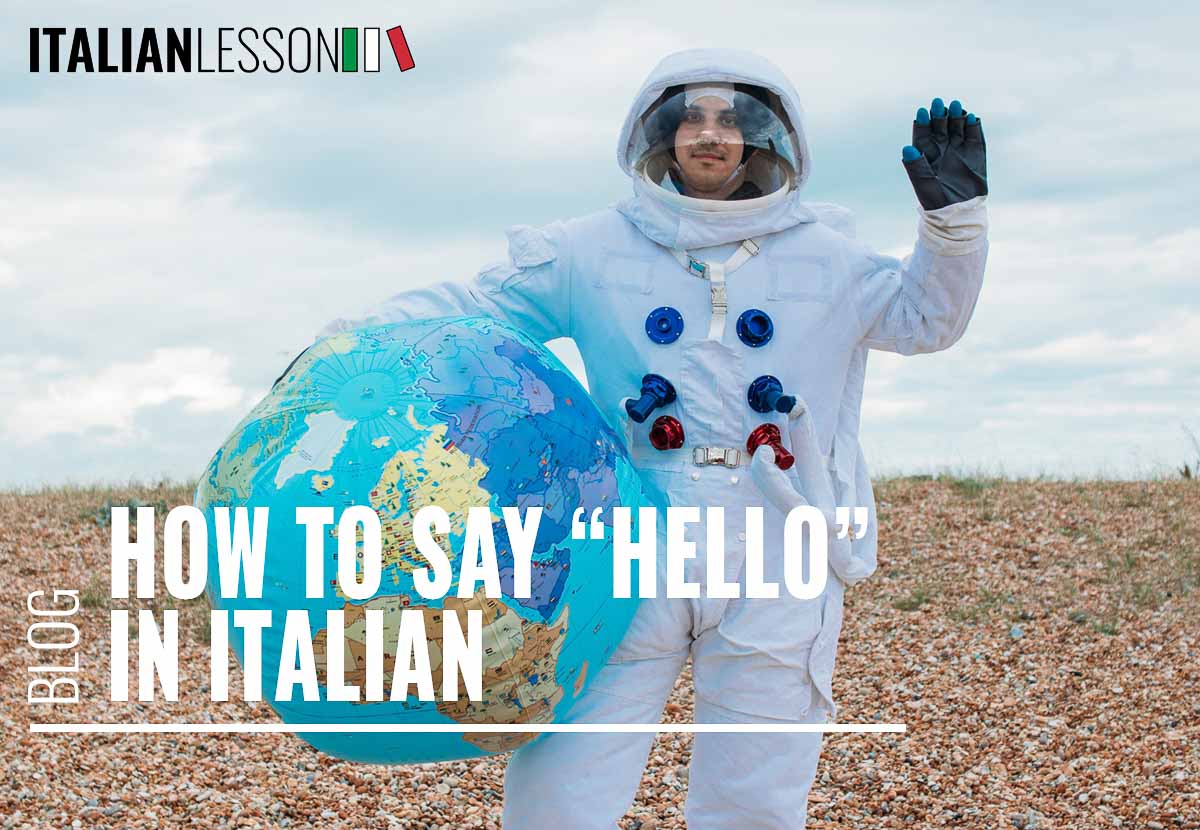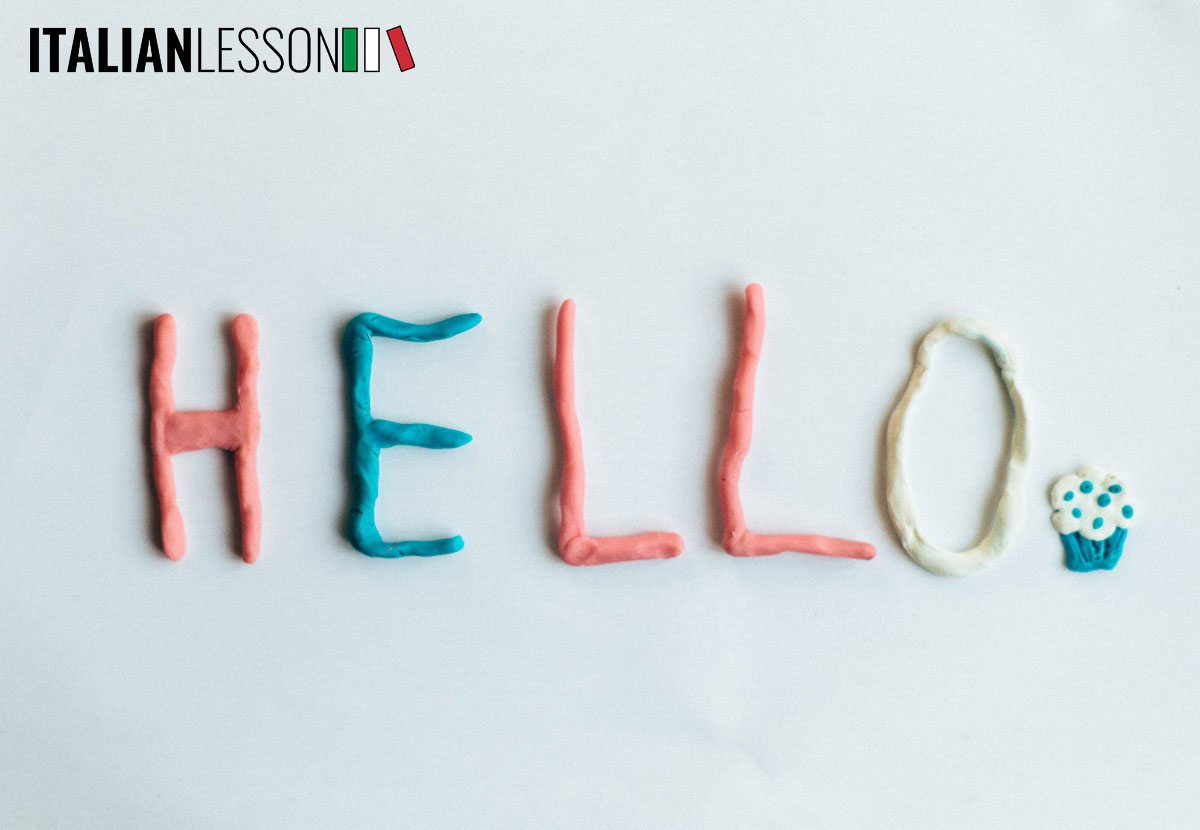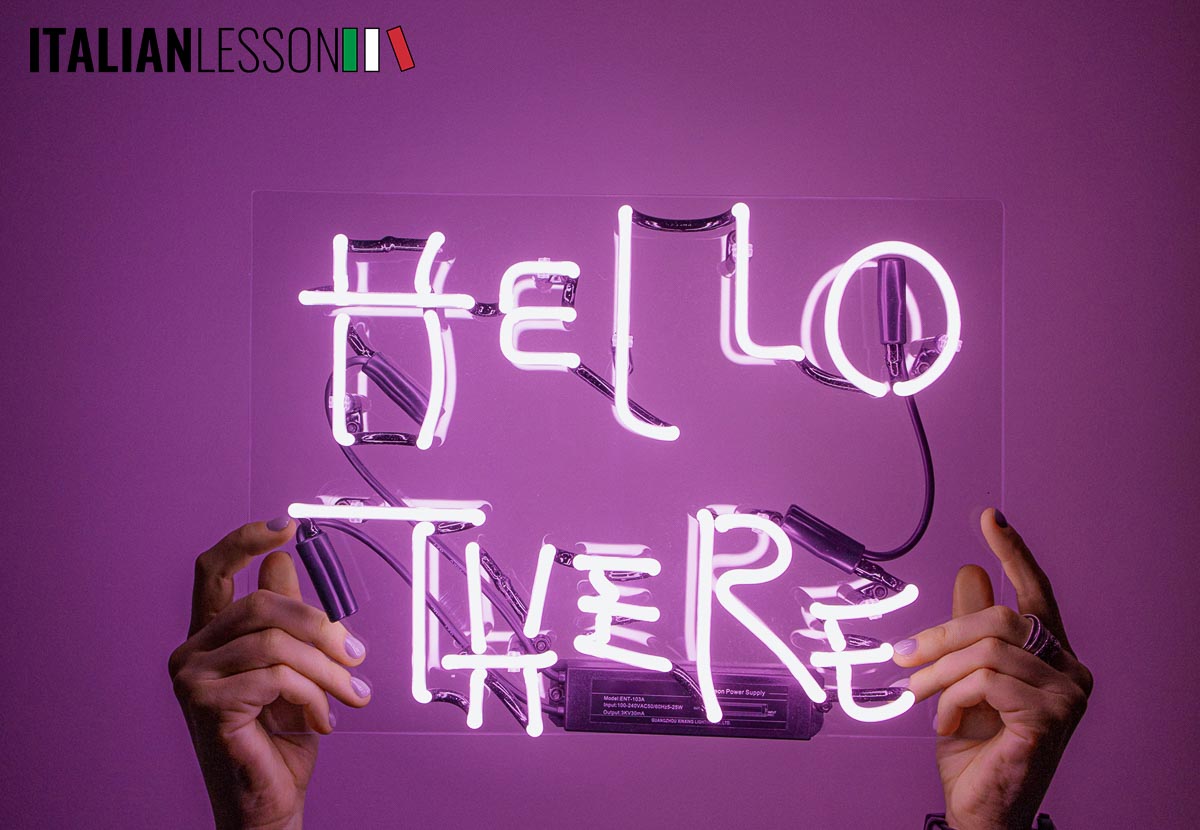
Ciao! Today we’ll see how to say “hello” and goodbye in Italian.
In the Italian language we have different ways to greet each other and we will see how we use the different variants. The Italian culture has influenced other cultures: in many languages they use the word “ciao” to say goodbye.
For example, German, Russian, Albanian, Romanian, Spanish and many other languages have incorporated “ciao” into their greetings.
Check on “Let’s look at Italian greetings”!
https://italianlesson.it/en/how-to-say-in-italian/lets-see-italian-greetings/
How to say “hello” in Italian
We have a different “hello” in Italian: if the English language uses “hello” (when you meet each other) and “bye” (when you go away), Italian people say “hello” and “goodbye” in the same way: there is only “ciao” in the Italian language, both when you meet and when you go away.
We also have different expressions that say “hello” in Italian:
- Hey, We, Welà: very informal and youthful greetings, maybe for friends and peers
- Chi si rivede! (we meet each other again!)
- Chi non muore si rivede (If you don’t die, we’ll meet again)
the last one seems very creepy, but we use these alternatives when we talk to someone we haven’t seen for a long time… So, they can’t be used with people we meet every day!
“Ciao”, “hey”, “chi si rivede” are usually followed by the expression “come stai?”:
- Hey, ciao come stai? to express “hello, how are you” in Italian.
or
Hey bello, come butta? / Hello man, what’s up?
(This is an “underground” version of saying hello, how are you” in Italian, used by young people)
As we said before, the Italian “hello” CIAO has influenced other cultures and other languages.

Nowadays in these countries, especially, but not only, young people regularly use the word “ciao” using their own spelling.
For example:
- Albanian: çao/qao
- Bosnian: ćao: ćao
- Bulgarian: чао (čao, most used in farewell)
- Czech: čau (both in the meeting and in the farewell)
- Estonian: tšau (both in the meeting and in the farewell)
- French: ciao or tchao (in the farewell)
- Maltese: ċaw (in the farewell); also ċaw ċaw;
- Portuguese: tchau (in the farewell)
- Romanian: ciao (most used in parting; rarely in the meeting)
- Russian: чао (čao, in the parting); a playful чао-какао is also used
- Slovak: čau (most used in parting; rarely in meeting)
- Slovenian: čau (both in the meeting and in the farewell); also čau čau
- Spanish, chao (used especially in parting)
- German: tschao (only in parting)
- Turkish: çav (in the farewell)
Here is another in-depth study on the subject
https://it.wikipedia.org/wiki/Ciao

Now we’ll see a particular use of the word “ciao” in Italian. In the cases below we will see that it does not relate saying “hello” in Italian or to any kind of greeting.
We’ll try to understand this better.
“Oggi ho visto un unicorno volare in cielo” “Si, ciao!” / “Today I saw a unicorn flying in the sky” “Yes, hello there!”
In this case the second person says “ciao” not because he’s leaving, but to express his scepticism about what the first person said.
Now it’s time to say goodbye, but I hope to see you soon!
